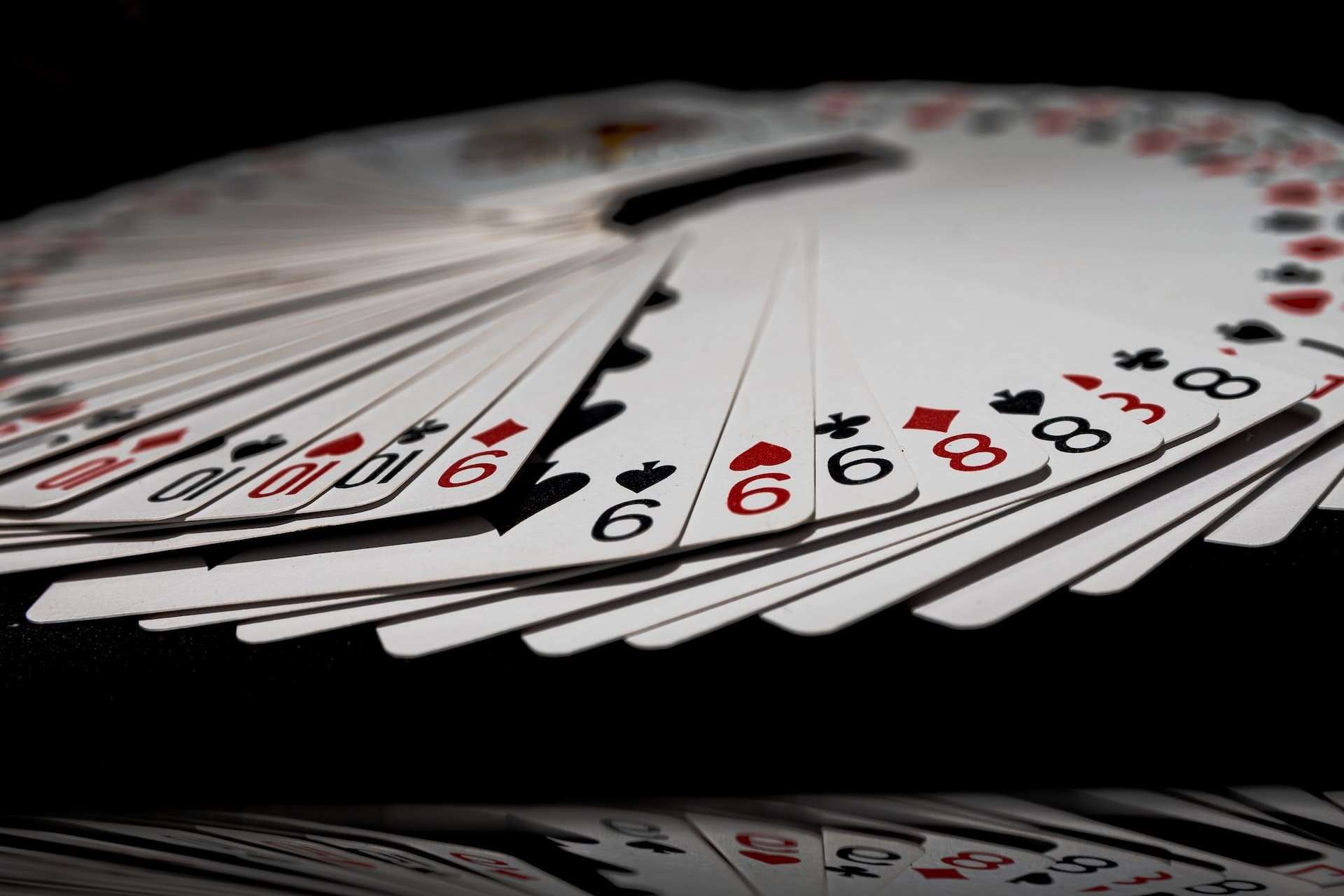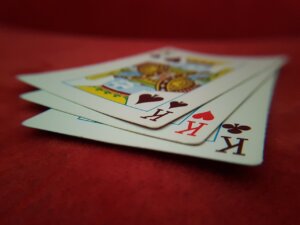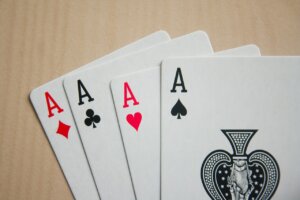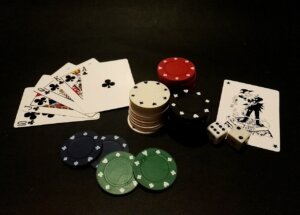In poker, two pair is a hand consisting of two cards of the same rank, two cards of another rank, and one card of a third rank (the kicker), such as J, J, 4, 4, 9. This hand ranks below three of a kind and above one pair.
A two-pair hand like the example above is often described as “Jacks over 4s”, “jacks up,” or simply “two pair.” Two Pair hands are very common in games like Texas Hold’em and Omaha but are much less frequent in other variants like stud poker.
In most variants, if more than one player has two pairs, the player with the highest-ranking pair wins. If there is still a tie, the player with the second highest-ranking pair wins. Finally, if both players have identical pairs, the player with the highest-ranking kicker wins.
How to Play a Two Pair hand
If you’re dealt two pair hand in poker, it’s important to know how to play them strategically in order to maximize your chances of winning. Here are some tips:
- Don’t get too attached to your hand. Just because you have a hand with two pairs, it doesn’t mean you’re guaranteed a win. Remember that anything can happen on the final card, so don’t get too cocky and make careless bets.
- Be aware of what your opponents have. If you’re up against a player holding a higher pocket pair than yours, or one who has made a flush or straight on the board, you should be more cautious and commit only a few chips to the pot.
- Don’t slow play. With two pairs, it’s usually best to raise and stab at the pot immediately. A slow played two pair hand can easily be outdrawn by other players, and you could end up losing a lot of chips by checking/calling or not betting at all.
Common Mistakes to Avoid When Playing Two Pair in Poker
Even though two pairs are considered a strong poker hand, there are still many hands that could potentially beat your two pairs. So remember to consider these other hands when you’re playing.
If you have a pair of aces and a pair of Kings, you need to be aware of other opponents who might be holding a three-of-a-kind hand or even a straight or flush.
If you have a lower two pair, like a pair of 2s and a pair of 3s, you need to be aware of the other players who may have a higher two pair or even a Full House. In general, when you have a two pair hand, you need to be aware of the other players who may have better hands than you do.
When to call or raise a Two Pair hand
To determine whether to call or raise with your two pair hand, you need to compare the pot odds to your chances of winning the hand, also known as your hand odds. Hand odds refer to the probability of improving your hand and winning the pot.
For example, if you have two pair on the flop and your opponent bets into you, you could calculate your hand odds by counting the number of outs and dividing by the total number of unseen cards. If there are nine outs that could improve your hand (such as hitting a third card of either rank), and there are 47 unseen cards, your hand odds are approximately 19%.
It may be worth calling if the pot odds are higher than your hand odds. On the other hand, if the pot odds are lower than your hand odds, it may be more beneficial to raise, especially if you can force your opponent to fold weaker hands.
By calculating pot odds and comparing them to your hand odds, you can make informed decisions about how much to raise or call with your two pair and increase your chances of winning at the poker table.






